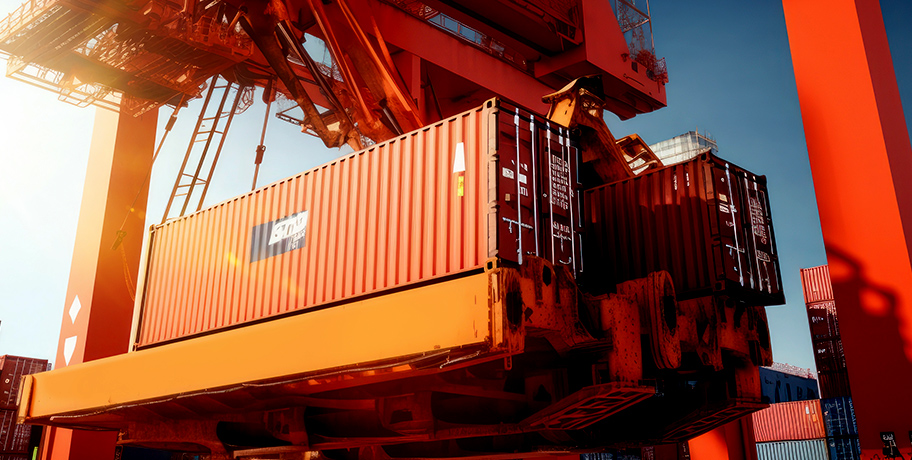ON THE CLOCK – THE CRITICAL TIMING OF SHIPPING CONTAINER DRAYAGE
Mar 11, 2022
On The Clock – The Critical Timing of Shipping Container Drayage

Drayage may literally be the “heavy lifting” of global supply chains. Navigating the complexities of port congestion, detention fees, demurrage fees, different requirements based on each port and the coordination to get the container back to the port after emptied requires an extensive amount of coordination.
Here’s how you or your transportation partner can manage the process to minimize costs and avoid bumps along the way.
Getting Ahead of the Container
You would think that putting a container on a ship or rail car would give you plenty of time to arrange for pick-up at the destination port or terminal. But that’s only half true. Because ships and trains can only give you windows for off-loading, often the best you can hope for is a date. Fortunately, you have a few days to retrieve your cargo. To avoid confusion and costly misfires, line up your carrier for that window. But—if at all possible–don’t hard book a pick-up until you know the container is landed.
In the meantime, share as much information and documentation as you have with the carrier or the transportation partner managing the pick-up. In addition to the container number and bill of lading (or master bill of lading), this can include all customs declarations and proofs of payment of all fees. This will help assure a smooth pick-up.
Once you have confirmation the container is landed, execute the arrangements you’ve made with the carrier. Or if you have a transportation partner managing the operation, they should know based on your container number when the container has arrived. They can then start planning directly with the carrier on your behalf. If you are reaching out to the carrier directly, making sure you give them notice to retrieve the container without incurring any additional charges like demurrage or extra rental days for the chassis.
Of course, even the best plans don’t always go according to plan. If for some reason you don’t find out immediately when your container has been landed, having all your arrangements in place will improve your chances of getting it picked up and out of the yard as quickly as possible.
Getting The Load on the Road
This is where working with an experienced carrier or transportation partner who knows the port is critical. Port operations are like a maze, both physically and operationally. Experienced carriers or transportation partners not only know the physical layout, but the procedural steps necessary for a smooth pick-up and release of the container. You do your part by making sure they have all the documentation and information they need to clear these milestones with minimum fuss.
Once the container is safely out of the yard, the classic clock starts. But there can be opportunities for cost savings here that are unique to moving containers.
A direct haul from a port on the coast to an inland destination may not be the most cost-effective move, because you will still have to pay for the driver and equipment to get back to their point of origin. Depending on the distances involved, this can involve lay-over charges and per diem expenses on the shipping container itself.
You may find it less expensive to have the container unloaded at a warehouse near the pick-up location and then transload the contents onto a regional carrier for transportation to the final destination. Regional carriers are better set up to arrange back-hauls which will cut the round-trip cost or eliminate it altogether. This will also virtually assure you don’t incur excess charges for extended use of the container, chassis, or the carrier’s services.
Getting There and Back
If using the container to carry the goods to their destination is the best option—for cost or timing purposes—you need to be sure the container is returned to the point of origin. While this is ultimately the carrier’s responsibility, the more you can do to simplify the trip and smooth the paperwork, the less time and trouble you’ll have closing out the move.
If for no other reason, this is where a transportation management system (TMS) or a skilled dray provider can really pay for themselves. By having easy access to port information and all the documentation associated with a load in a single source of truth—that can be shared with all the parties—you can save countless hours of administration. In fact, because the TMS has all the details of the move and the associated costs, you can analyze your costs and identify any opportunities for savings moving forward.
Those savings may come in the form of time, costs or effort. But they will all contribute to a better bottom line.
For more on drayage management and how we might be able to help you, please click here!



